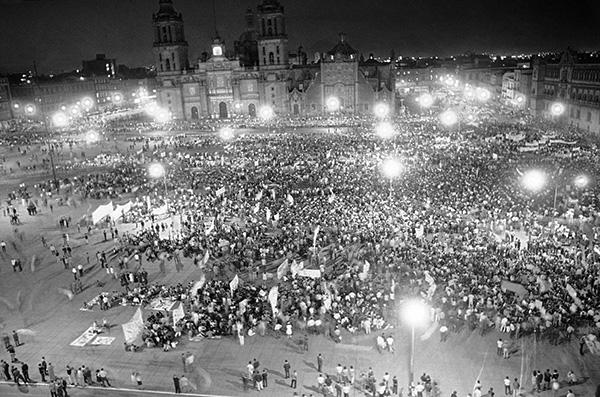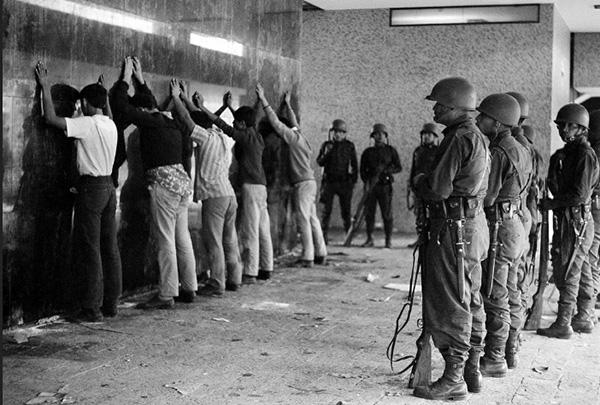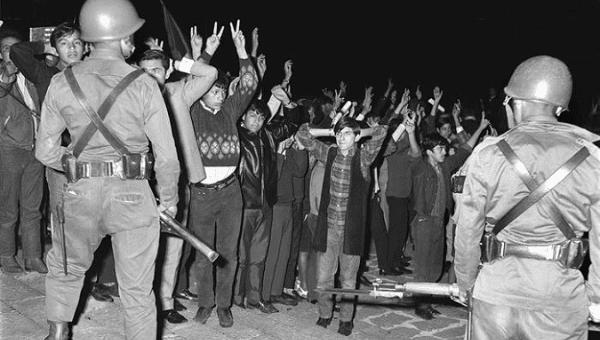Latin America
Related: About this forumInquiry into Mexico's 'dirty war' obstructed by military and other agencies, board says
Oscar Lopez in Mexico City
Fri 16 August 2024 at 6:00 am GMT-5·4-min read
An independent commission charged by Mexico’s president with documenting human rights atrocities committed by the state has accused the country’s military and other government agencies of obstructing their investigation and threatening the country’s transition towards justice and democracy.
A blistering report released on Friday details years of abuses committed by Mexico’s government and its armed forces between 1965 and 1990, a period known as the country’s “dirty war” when it was ruled by an authoritarian one-party system which violently repressed any form of dissent.
Efforts by students, peasant farmers and Indigenous groups to challenge the regime were violently repressed, particularly by the Mexican military. Hundreds were extrajudicially executed, with their bodies sometimes thrown from planes into the Mexican Pacific in what were called “death flights”. At least 1,000 people simply disappeared, their whereabouts still unknown.
Arguably the most well-known incident during that period was the 1968 Tlatelolco massacre, when members of the military and the president’s personal guard mowed down hundreds of peaceful protesters in Mexico City.
More:
https://uk.news.yahoo.com/inquiry-mexico-dirty-war-obstructed-110016670.html
(US corporate media didn't feel obligated to inform the US public about this, of course, but it did pitch fits when 2 US athletes held their fists up in the air in 1968 at the Olympic games in Mexico City, and terrorized some who described it as their "black power salute!) ![]()
![]()
![]()
![]()
![]()

![]()
![]()
![]()
![]()
![]()
![]()
![]()
![]()
![]()
![]()
![]()
![]()
![]()
![]()
![]()
![]()
![]()
![]()
Judi Lynn
(163,962 posts)American Crime Case #27: October 2, 1968: The U.S. Hand in the Mexican Government’s Massacre of Hundreds of Students at Tlatelolco
February 4, 2019

Massive protest in Mexico City, 1968. Photo: AP
In July 1968, the Mexican government’s violent repression of students protesting police brutality led to a student strike that rapidly spread to universities. Here a great throng of demonstrators gathers in the Zócalo, or Constitution Square, in the heart of Mexico City, August 14, 1968, at the conclusion of a five-mile march through the city. (Photo: AP)
THE CRIME
On October 2, 1968—ten days before the start of the 19th Olympic Games in Mexico City—10,000 students and other supporters of a months-long student upsurge gathered for a meeting and rally in the Plaza de las Tres Culturas in the Tlatelolco section of Mexico City. The students had made clear they weren’t going to march on the Olympic Village, but some 5,000 soldiers, 300 government tanks, jeeps, and armored cars, and hundreds of police surrounded the plaza nonetheless.
At 6:10 pm, flares were fired into the sky from a helicopter. Suddenly, out of nowhere, shots were fired from the upper floors of the Chihuahua apartment building overlooking the crowd, where many students were gathered.

Mexican troops guard young men arrested after a night of protests on October 2, 1968. (Photo: AP)
The troops immediately responded by raking the crowd with machine-gunfire. Soldiers with fixed bayonets advanced from two sides—there was no escape. Tanks opened fire on the apartment complex, where student leaders had been speaking from a balcony. Inside the apartment building, a group of heavily armed men—each wearing a white glove on his left hand—detained the student leaders. The students were beaten, stripped to their underwear, and arrested.1

The Mexican government initially reported that four people had been killed and 20 wounded. The British newspaper Manchester Guardian reported that after careful investigation, it found that 325 probably died and the number could be much higher. Eyewitnesses described seeing “bodies of hundreds of young people being trucked away.” There were reports that bodies were burned or tossed into the sea. Thousands of students were beaten and jailed, and many disappeared.2
Ten days later, while 1,500 students in a military camp were being beaten and tortured, the Olympic ceremonies opened. Family members of the disappeared searched the prisons and morgues for missing loved ones, as tanks rumbled past billboards in a dozen languages proclaiming “Everything is possible with peace.”
More:
https://revcom.us/en/a/581/american-crime-case-27-1968-us-hand-in-massacre-of-students-at-tlatelolco-en.html
róisín_dubh
(12,144 posts)I haven't tried in ages, but I gave up quickly. The amount of ridiculous bureaucracy is designed to keep researchers away. I didn't necessarily need to go there for my work, but several friends had the "privilege" of working there under heavy guard...